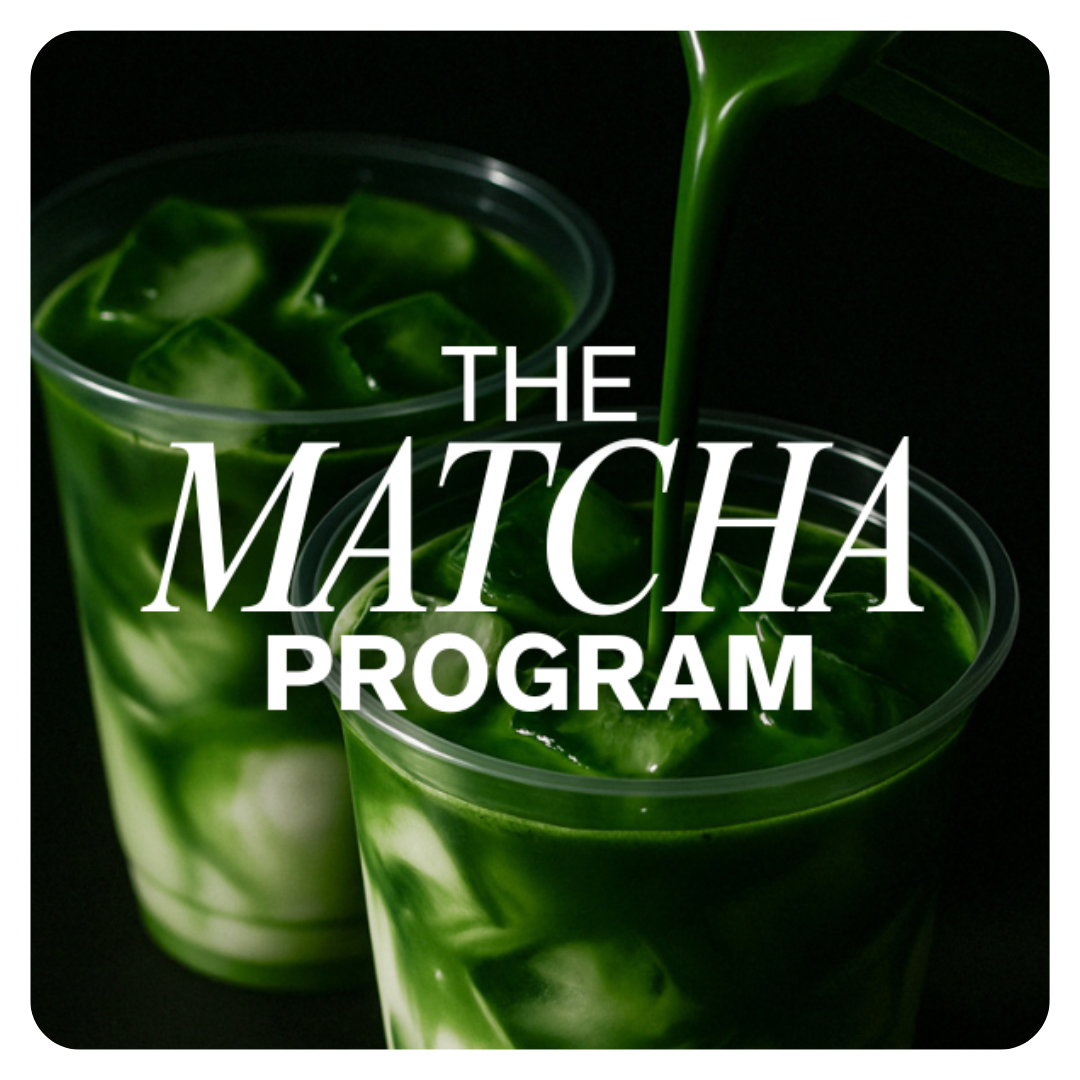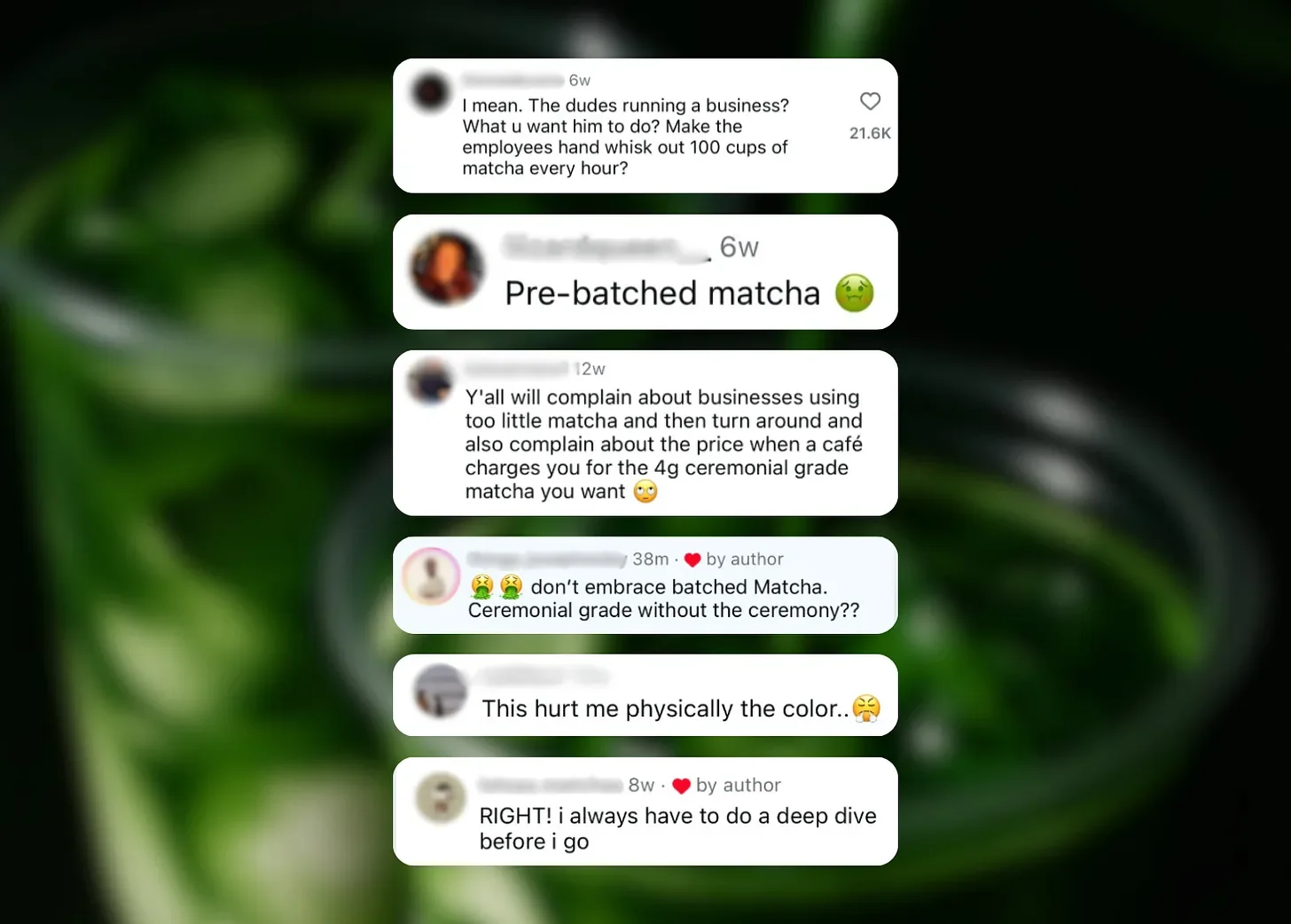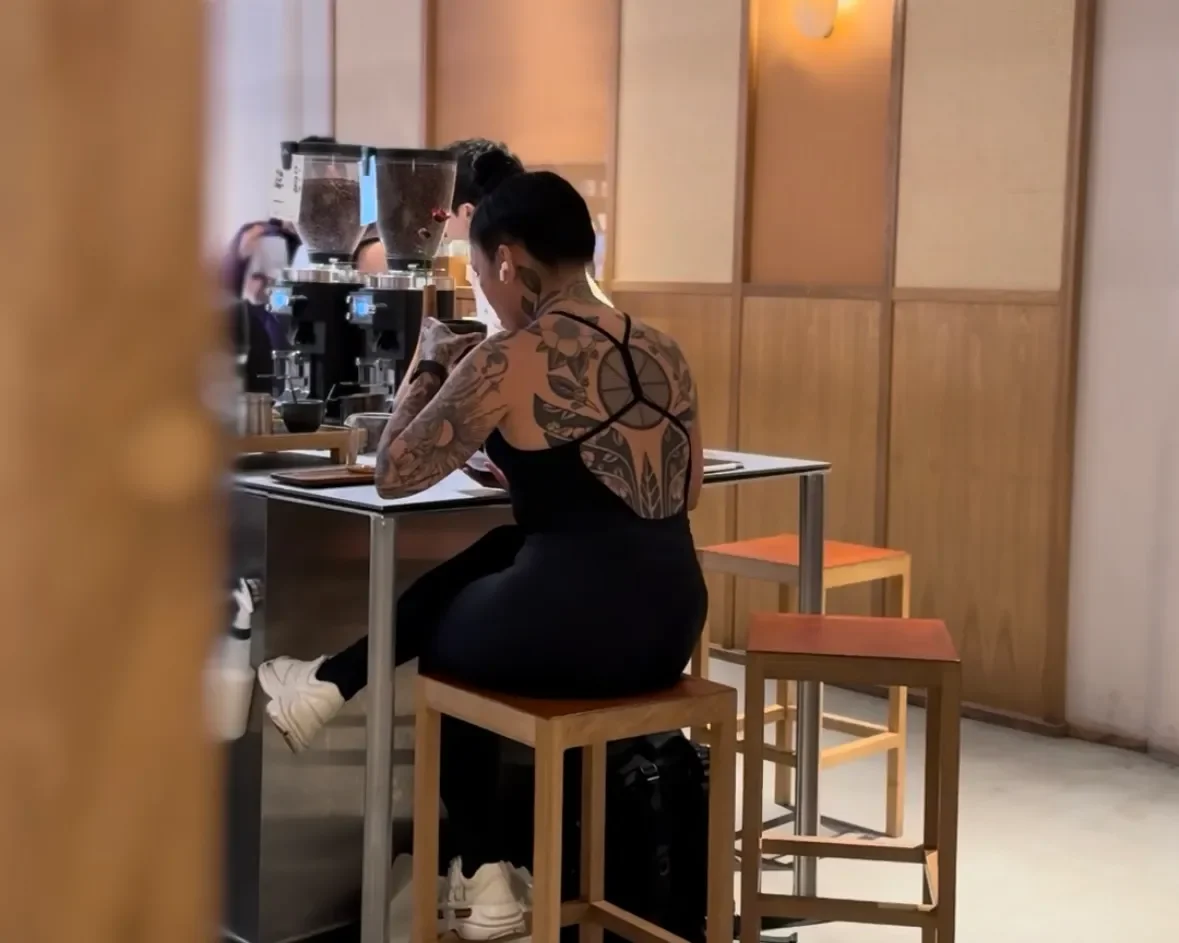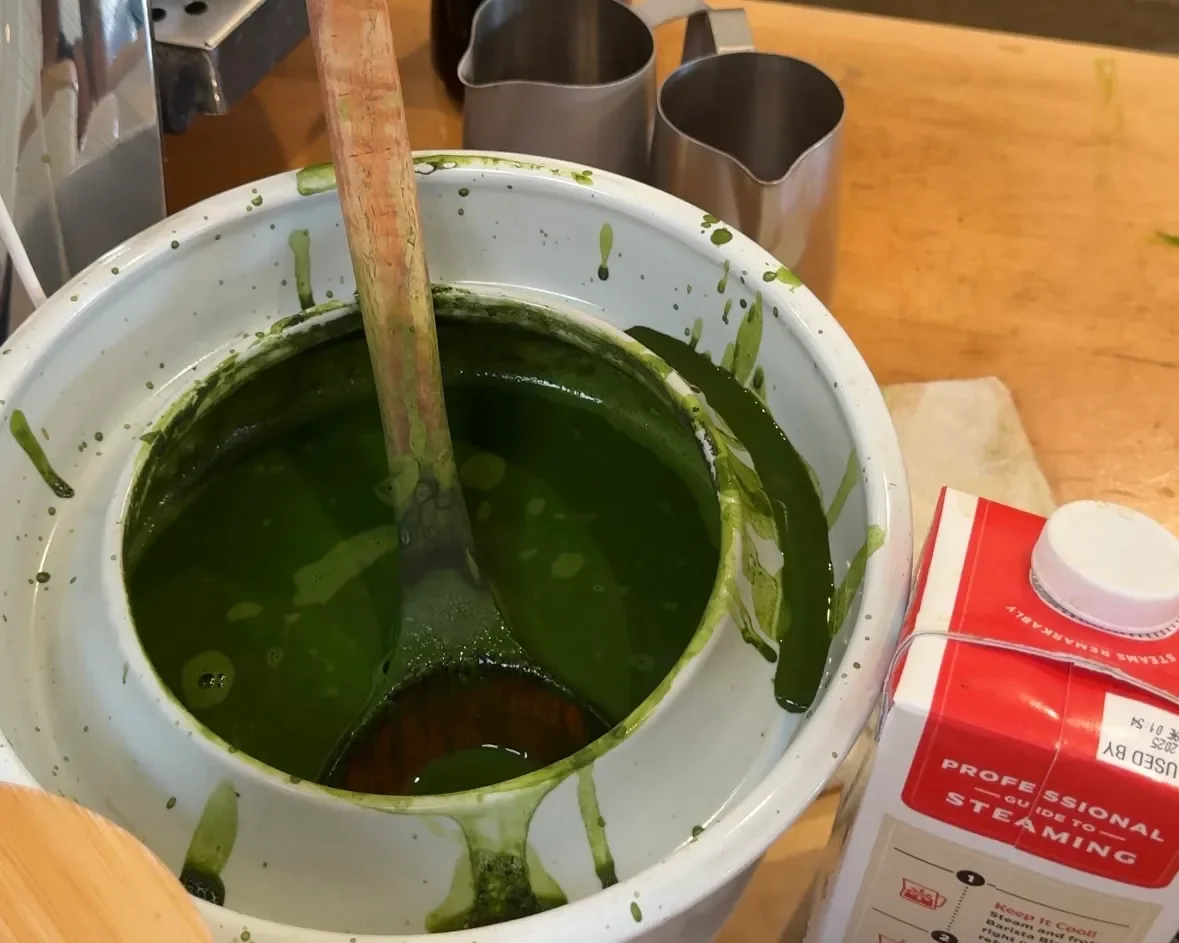What is a Matcha Program?
Just like a coffee program defines how a cafe sources, prepares, and serves coffee, a matcha program does the same for matcha. It’s more than a latte on the menu, it is a system of standards and storytelling that signals quality and care.
Specialty coffee programs have become the backbone of most modern cafes. They instantly signal training, thoughtfulness, and quality to customers. We see the same opportunity for matcha. The cafes that will stand out are the ones treating matcha with the same respect and intentionality they bring to coffee.
Our goal with The Matcha Program is simple: to empower baristas and operators with matcha knowledge that fits their context, so they can feel confident, consistent, and proud of what they’re serving.
Together, we were part of the founding team at Jade Leaf Matcha, where we scaled the brand from a single Amazon listing into the #1 selling matcha brand in the U.S.—an omnichannel, multimillion-dollar company acquired in 2020. Though we’ve since exited, we’ve remained closely connected to our network of tea producers in Japan and the community of matcha lovers we helped cultivate in the U.S.
After Jade Leaf, we each deepened our connection to tea: Jules advised U.S. and Japan-based specialty brands on DTC and B2B strategy, consulted CPG companies incorporating matcha, and supported cafes in elevating their programs. Marc celebrated meaningful personal milestones—most notably getting married—before we reunited to start building something new together.
Why Matcha Programs Matter in Today’s Cafe Landscape
Why Matcha Programs Matter in Today’s Cafe Landscape
Optics and Perception in the Age of Social Media
Screenshots of common perspectives matcha enthusiasts hold regarding cafe preparation of matcha.
Conversations around matcha on social media often feel polarized.
With matcha tickets rivaling or even surpassing coffee in many cafes, customers expect the same level of intentionality they already associate with coffee. And in the age of Instagram and TikTok, optics matter. Every cafe visit is documented, shared, and judged in real time.
This can work for or against you. A beautifully executed matcha program can elevate your brand presence online, while a poorly executed one can just as easily spread the opposite impression.
That is why baristas often find themselves under the microscope, fielding questions like:
“Do you use ceremonial grade matcha?”
“How many grams of matcha go into this drink?”
Even when customers don’t ask directly, they often form assumptions shaped by what they have seen online:
A latte that isn’t vibrant must mean the matcha is low quality.
A cafe batching matcha must be inauthentic.
A hand-whisked matcha must automatically be better or fresher.
The truth is more nuanced. We have seen cafes whisk to order and still serve dull drinks because the powder wasn’t stored well or the water was too hot. On the flip side, we have had vibrant, delicious batched lattes from cafes with airtight storage and thoughtful systems that slowed oxidation.
These expectations aren’t always based on accurate knowledge and that is not the customer’s fault. It reflects a broader opportunity for matcha education. Color, preparation method, or marketing terms like ‘ceremonial grade’ only tell part of the story. True quality also depends on sourcing, freshness, storage, water temperature, and barista training, all elements of a thoughtful matcha program.
Operators must balance meeting customers where they are with making decisions that make sense for their menu, operations, and bottom line.
👉 Quality isn’t about the method alone, it is about the entire program that surrounds it.
What Do Matcha Stations Look Like Today?
Jules sitting at her favorite seat in a cafe, next to the matcha station.
When we travel or visit cafes, one of our favorite things to do is observe the matcha station. If we are lucky enough to sit nearby, it feels like a front-row seat. Not to judge, but to understand how matcha is being integrated into service.
Unfortunately, many matcha stations in high-volume cafes look neglected. We have seen:
Matcha-stained bowls left sitting on countertops
Deflated, worn-out bamboo whisks
Powder spread across counters
Matcha stored in large, clear containers exposed to light
Batched matcha left at room temperature, or worse, in open containers exposed to oxygen and light
Batched matcha in a popular high-volume cafe stored on a cafe countertop, exposed to both oxygen and light.
These optics alone send a message, whether intended or not, that matcha is an afterthought. Paired with batching, which already carries stigma, this can reinforce negative perceptions.
But we have also seen the opposite:
Powder stored in dark, airtight containers
Tools cleaned and maintained throughout service
Bamboo whisks kept on proper stands
Stations tidy and intentional
These details don’t just improve workflow. They signal care to customers and usually align with a broader program that includes menu design, barista training, and how the cafe talks about matcha.
The Opportunity for Elevating Matcha Programs
We empathize with the challenges high-volume cafes face. Matcha tickets are often as high, or higher, than coffee tickets, and speed matters. But that only reinforces why intentional matcha programs are essential.
A strong program signals to customers that you care. It elevates your brand, empowers your team, builds trust, differentiates you from competition, and justifies premium pricing.
The Matcha Program Checklist
Here are the pillars we believe every high-volume cafe should consider. Use these as a self-assessment tool with your team:
✅ Transparent Sourcing
Do we know where our matcha comes from (producer, origin, harvest, mill date, cultivar(s), etc.)?
Can we speak confidently about our vendor or brand choice?
Are we open to exploring quality matcha from outside Japan, as producers themselves suggest to ease supply constraints?
A note on sourcing and transparency: Some tea producers prefer their privacy and may not want their names shared publicly and some matcha brands choose not to disclose them for various reasons—we know this from my time in the industry. Still, we’d urge cafe operators to ask the right questions and share what they can.
On stigma and broadening perception: There’s a deep stigma against matcha sourced outside of Japan, even though Japanese producers themselves have encouraged looking to other regions to ease supply constraints. Countries like China and Korea—with their unique climates, cultivars, and production methods—are broadening what’s possible for matcha in the same way coffee grown outside traditional regions expanded that industry.
✅ Menu Design and Storytelling
Are our matcha drinks positioned intentionally on the menu?
Does our menu highlight sourcing information (origin, harvest, cultivar, etc.)
Do customers understand what makes them special or different?
Do we offer options beyond lattes to highlight matcha’s versatility?
✅ Barista Training and Education
Can every barista answer common questions (origin, grams per serving, flavor notes)?
Do we have systems for onboarding new staff on matcha preparation?
✅ Matcha Station Design
Is our matcha stored in airtight, light-safe containers?
Are tools maintained and cleaned properly before, during, and after service? This is especially important for bamboo whisks, which wear quickly if not cared for and cannot be run through commercial dishwashers or sanitized with harsh detergents. More on this in future publications.
Does our station look intentional rather than chaotic?
✅ Quality Control and Consistency
Do we have standards for portioning and preparation?
Are drinks checked for taste and appearance regularly?
Are we avoiding free-scooping or unmeasured batching?
✅ Customer Experience
Are customers experiencing matcha as a point of care and quality?
Do we provide storytelling or small visual cues that elevate the drink?
✅ Sustainability and Waste Management (bonus)
Are we mindful of waste in storage, batching, and serving?
Are we aligning with customer values around sustainability?
Takeaway: Build Your Own Matcha Program
The point of outlining these tenets isn’t to overwhelm, but to empower. Every cafe is at a different stage, with its own challenges. The most important step is to stop viewing matcha as a menu add-on and start seeing it as a program with systems, standards, and stories.
If you are already a specialty cafe, you have done this with coffee. You know what it takes to be intentional about sourcing, training, and quality control. The same mindset applies to matcha.
One of the best steps you can take is inviting feedback. Ask your baristas where they see opportunities to improve. Ask trusted customers what they honestly think. The glowing feedback feels great, but constructive feedback points to the clearest opportunities to refine, educate, and grow.
Feedback is a gift. Staying open to it, even when it is tough to hear, keeps you close to your team, your customers, and evolving expectations.
Final Thoughts
Matcha’s popularity is at an all-time high, but education for both consumers and cafes still has a long way to go. Our hope with The Matcha Program is to create a space where baristas and operators can access resources that are practical, context-driven, and ready to implement.
Whether you are running a permanent space or a pop-up, the same pillars—sourcing, training, quality control, intentional design—shape how customers experience matcha.
Like coffee programs, matcha programs signal quality, intention, and care. The cafes that embrace this will shape how matcha is experienced in high-volume environments.
👉 So, what does your matcha program signal? Take the checklist to your team this week, start the conversation, and let us know what topics you would like us to cover in future posts.






